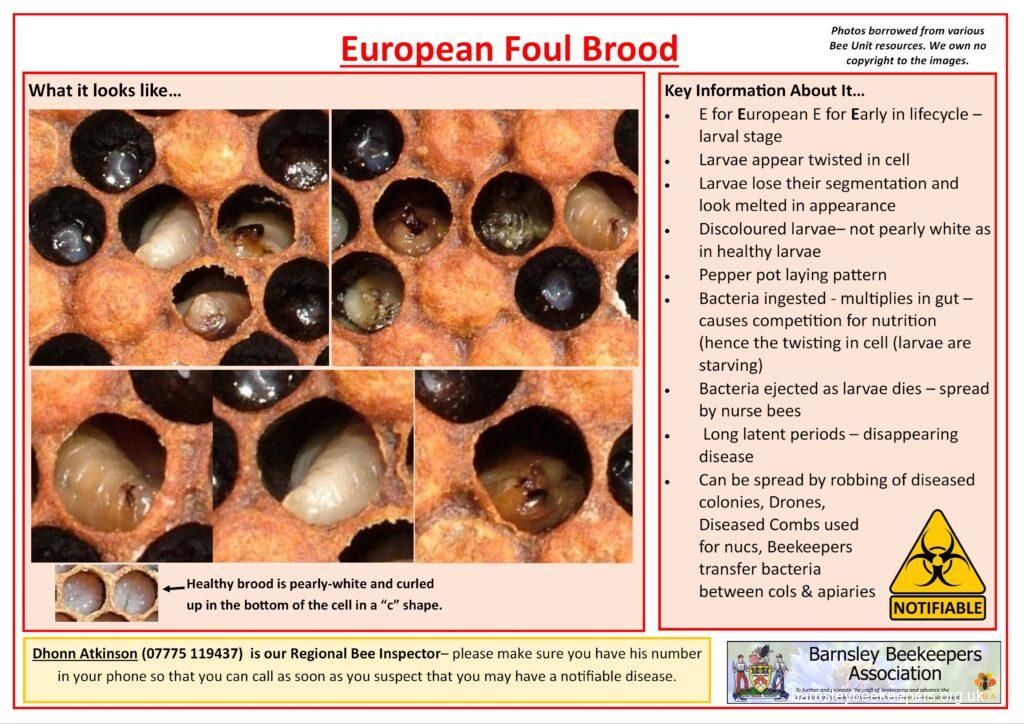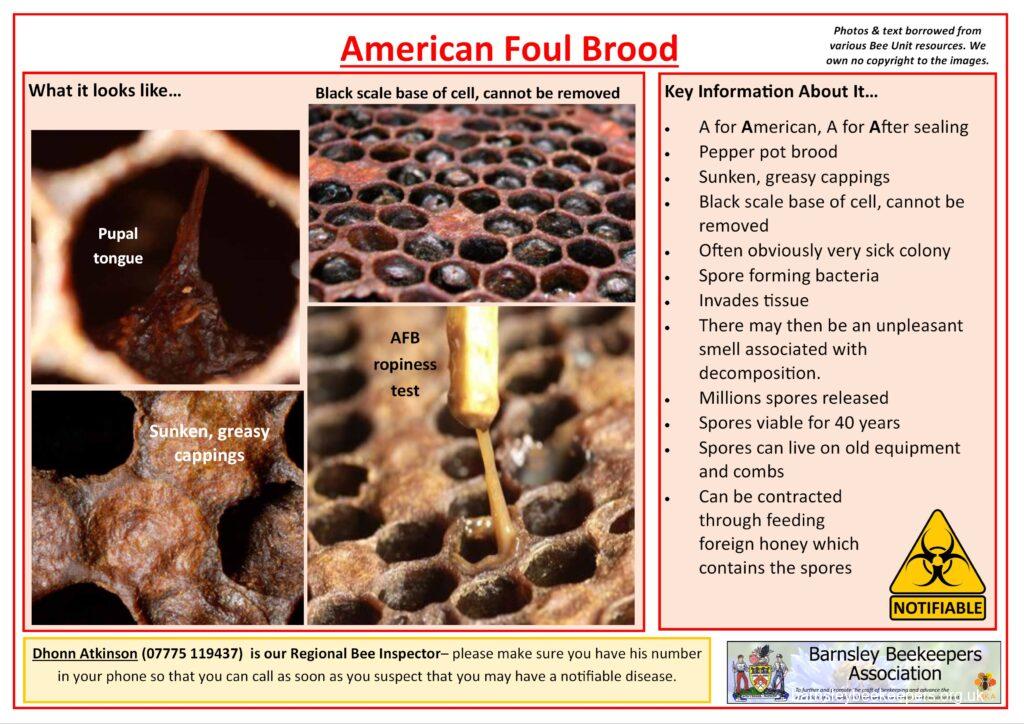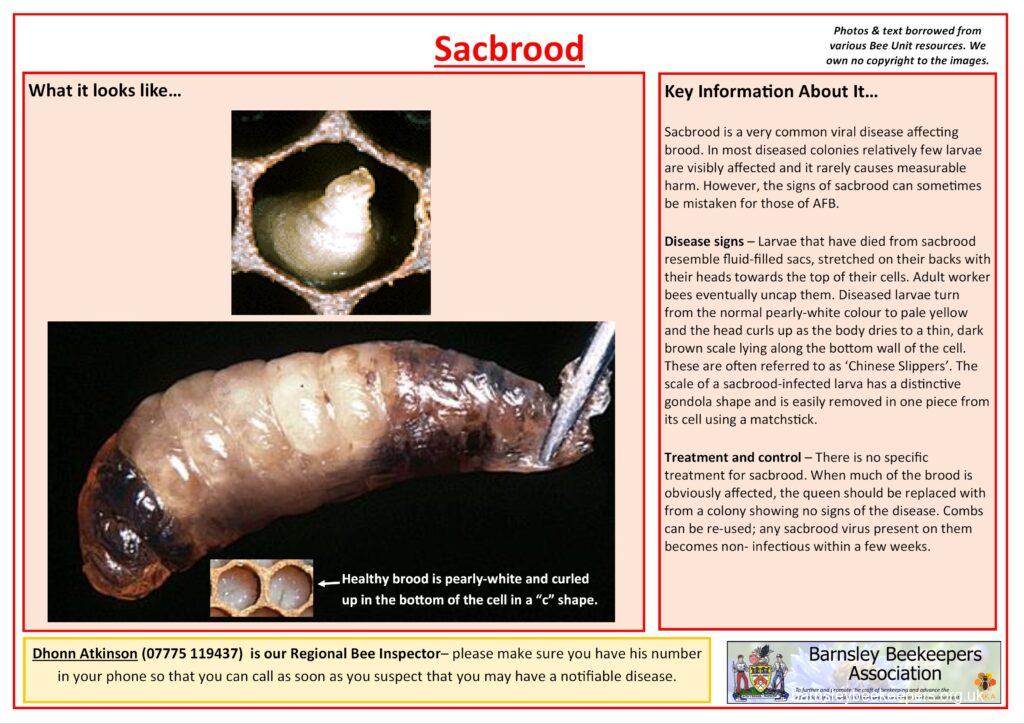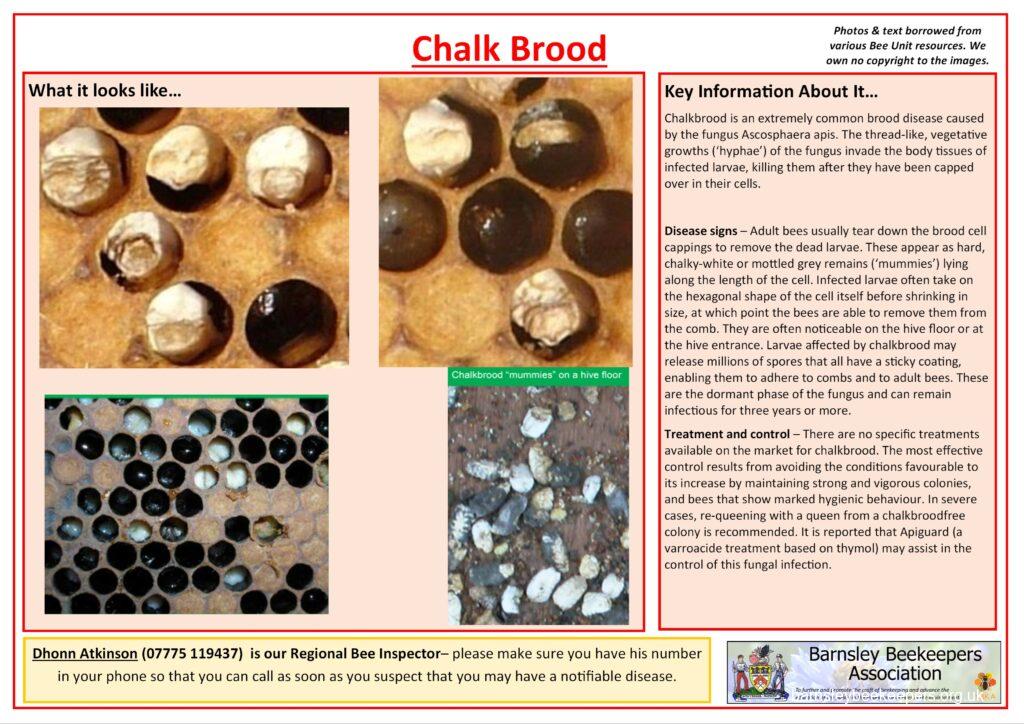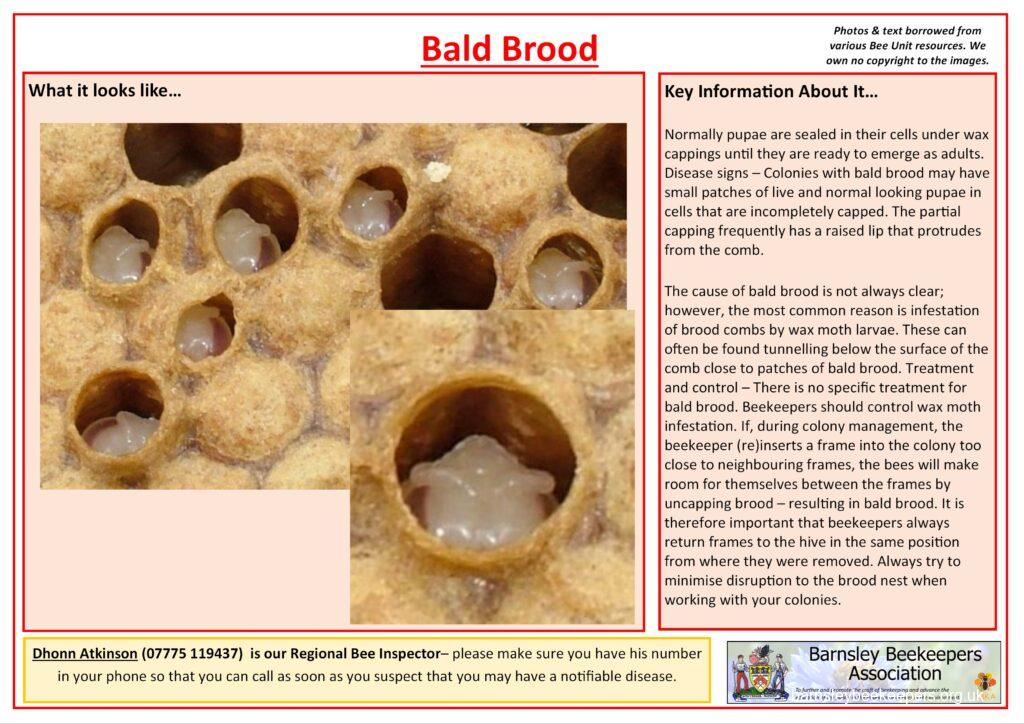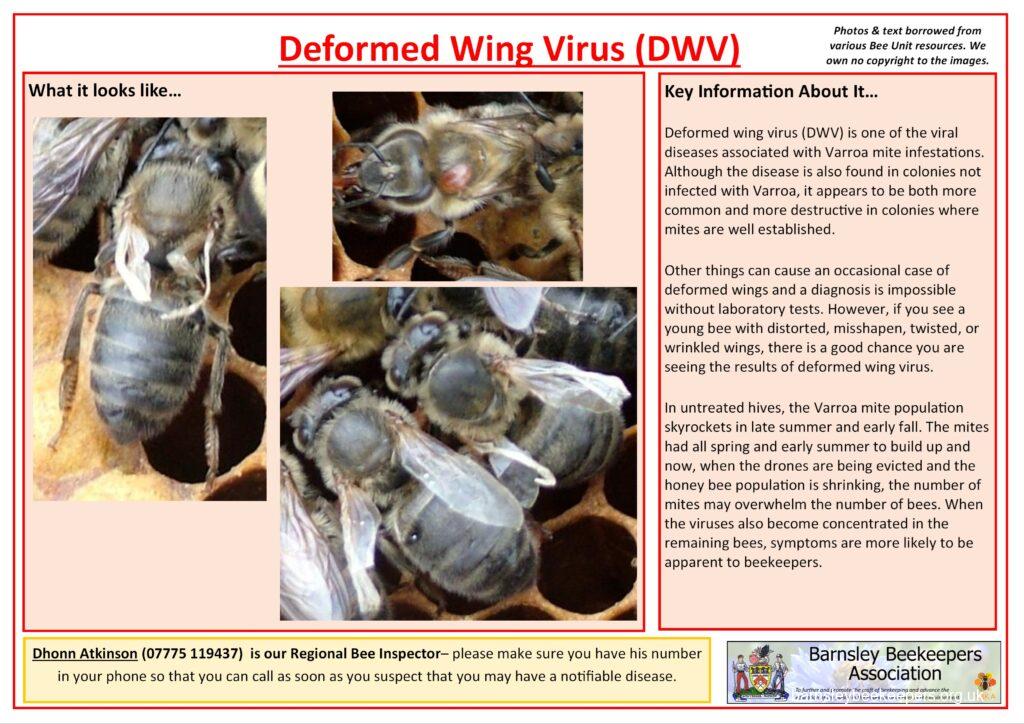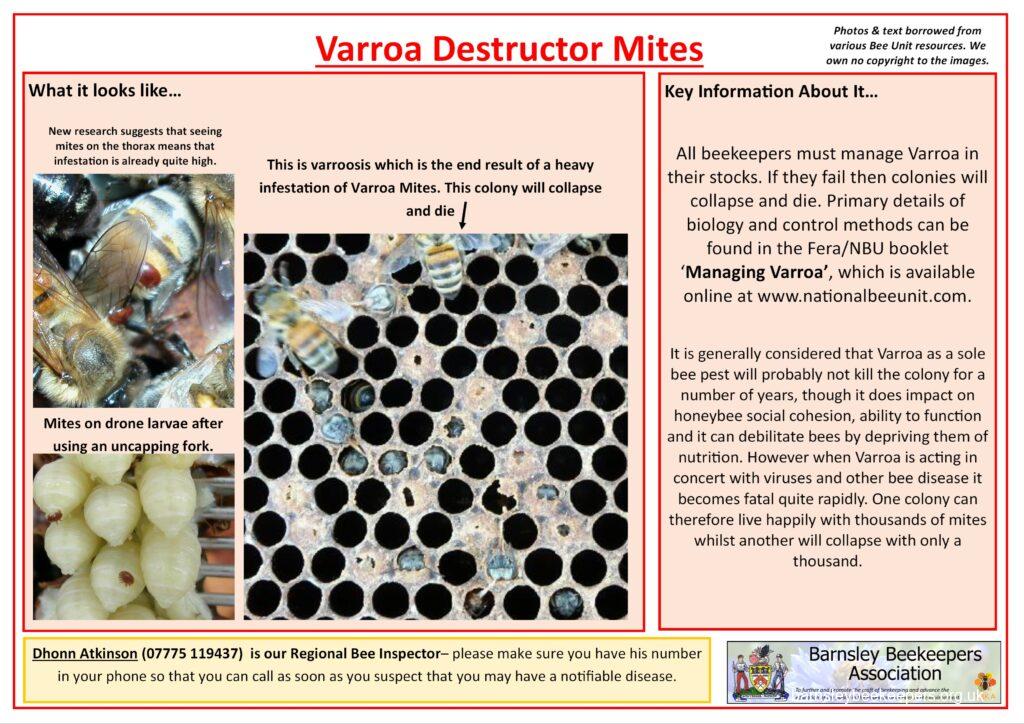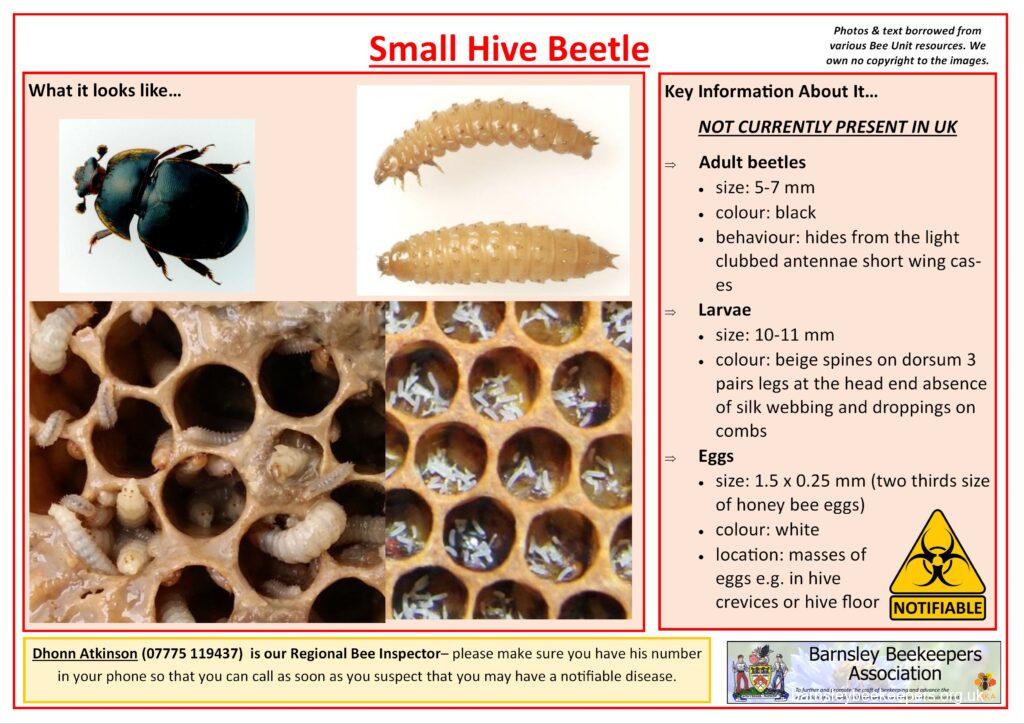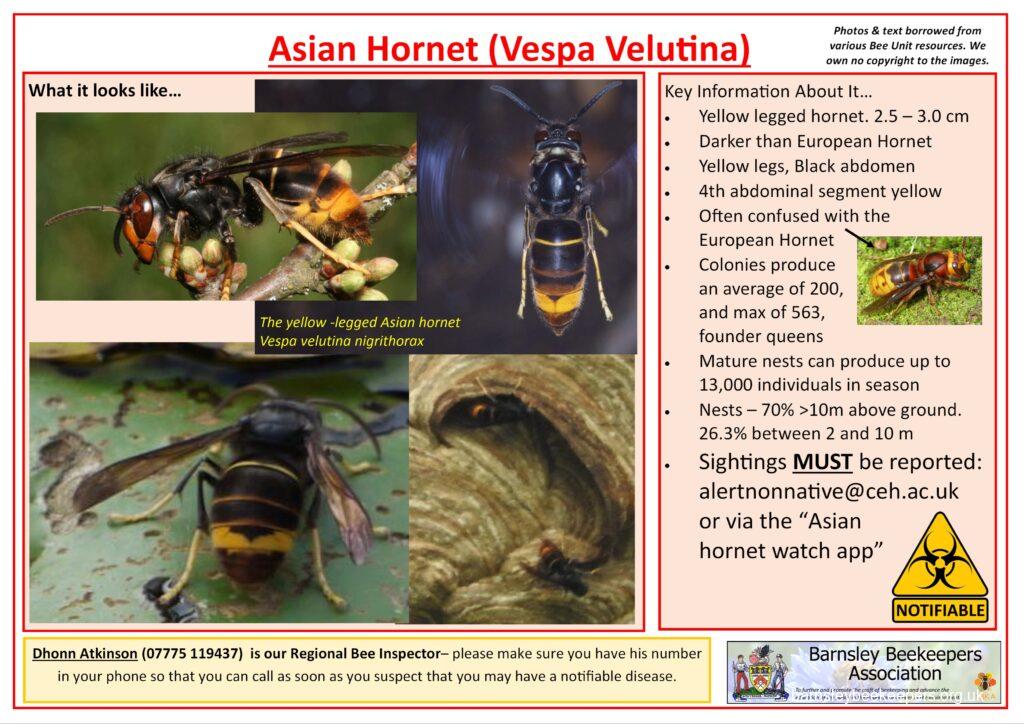Spring is an excellent time to check your colonies for disease because the population in the hive is low…er than in summer.
To carry out a disease inspection each brood frame is carefully checked for the queen before the bees are shaken into the brood box: this means that the combs are bee-free and easier to check!
The most important thing for a beekeeper to know is what healthy brood looks like. If you know what it SHOULD look like then you know when something isn’t quite right!
Identifying Healthy Brood
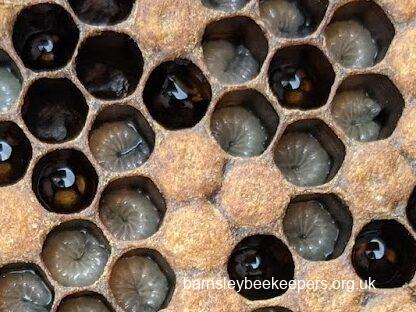
Healthy brood glistens a pearly white. The larvae are “c” shaped and sit at the bottom of the cells. You can see the segmentation in their body. They are swimming in a little pool of brood food.
Healthy pupae under the caps are at first white but as they develop into adults, their colour darkens. The eyes begin to colour first.
Cappings are uniformly brown, tan or cream. Each cap is slightly raised or convex, without any holes, except in a few cases where the cell cap has not yet been fully built.
The general appearance of the brood pattern is regular with no dead larvae or pupae
Confirming disease
Below are a selection of handy disease recognition cards (click to see larger versions) which you should familiarise yourself with. None of the content belongs to Barnsley BKA; we have borrowed the text and photos from Bee Base and put them into an easy to use (well we think so) format.
Bee Base is an important resource for all beekeepers and you should be registered with them, and your apiaries marked, so that you can get updates about disease in your area.
Bee Base also has a very useful eLearning course on diseases and pests. Once you login, down the left hand menu you will see an option for eLearning.
It’s important that you are familiar with the contact details for our Regional Bee Inspector, currently Dhonn Atkinson, who coordinates a group of Seasonal Bee Inspectors. Up-to-date contact details for your local bee inspector are available from the Bee Base website: https://www.nationalbeeunit.com/public/Contacts/contacts.cfm

